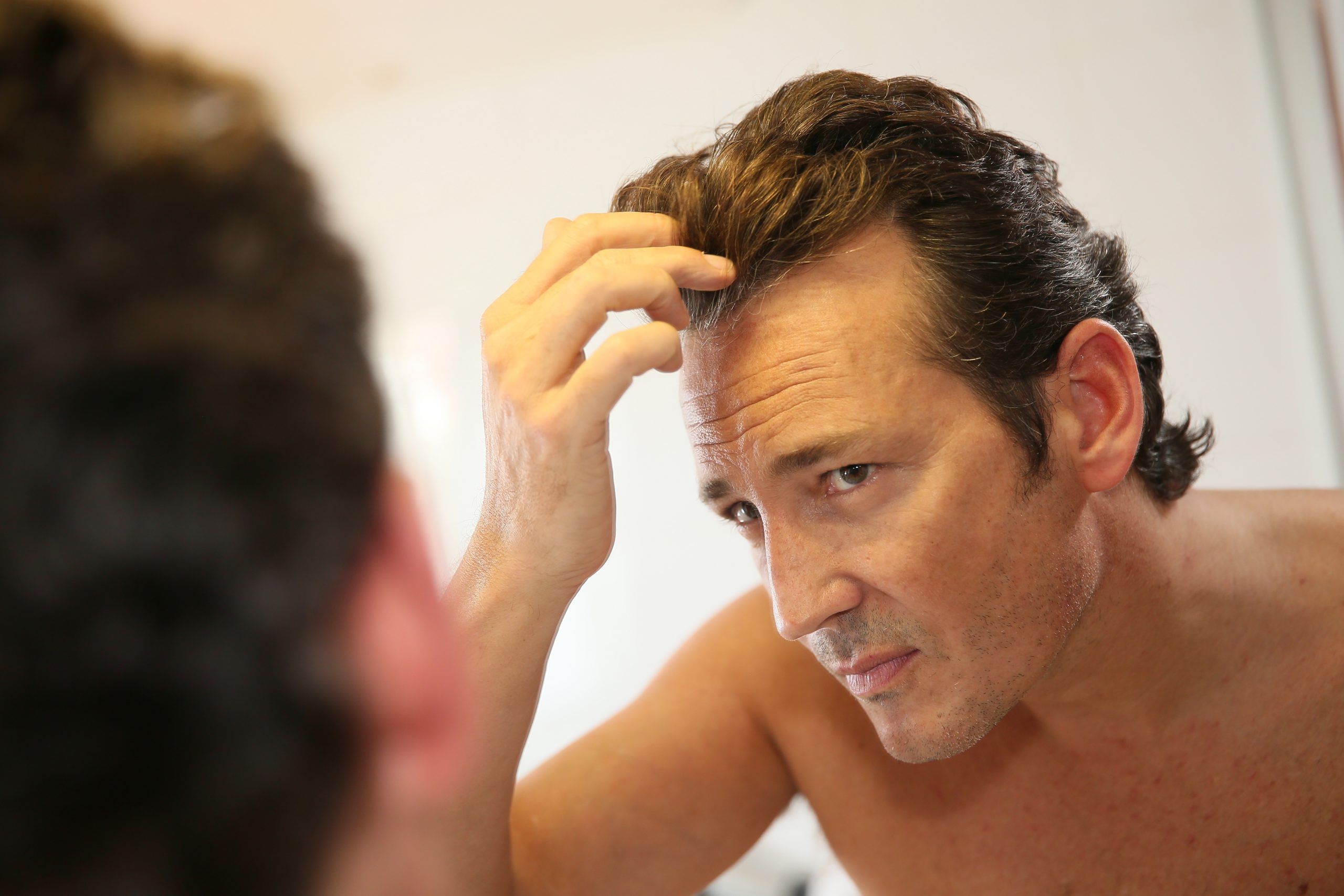
Page Contents
If you have ever had concerns about hair loss, remember that the average person loses about 100 hairs a day. Shedding is always happening. It doesn’t necessarily indicate a problem. All hair loss at the root will contain a bulb present from the follicle.
The white bulb isn’t usually noticed until shedding becomes excessive. In that case, you may find yourself examining the fallen strands.
The bulb may be small or large and be white or pigmented. A hair without a bulb means the hair was lost before the root. Excessive loss of hair with a white bulb attached indicates Telogen effluvium. This is male or female pattern baldness.
If a hair falls out with a white bulb attached, it cycled through the Telogen phase. There’s no reason for concern unless your shedding is excessive. These strands are also known as club hairs because of their shape.
Hair And Hair Growth
A hair is made of a tough protein called keratin, while a hair follicle anchors each hair into the skin. The hair bulb makes up the base of the hair follicle. However, hair color is created by pigment cells that produce melanin in the hair follicle. With aging, the pigment cells die, and the hair eventually turns gray. Blood vessels nourish the cells in the hair bulb, which deliver hormones that modify hair growth and structure. The average rate at which hair grows is around one-half inch per month. There are three phases in which hair growth occurs;
- Anagen- This is the growth phase characterized by the growth of most hair at any given time, lasting for several years.
- Catagen– This is the transitional phase where the hair growth slows over a few weeks, and the hair follicle shrinks.
- Telogen phase- This phase is the resting phase. Old hair detaches from the hair follicle, and hair growth stops. After that, new hair begins the growth phase and pushes the old hair out.
The bulb is at the bottom of the hair follicle. It contains three distinct parts: The papilla, which is the bottom-most part of the bulb, it connects to the follicle root delivering nutrients, oxygen, and energy from the blood vessels; the germinal matrix is the second layer, where cells divide to produce new hair; and the root sheath which comprises of the inner and outer root sheaths. This part protects the newly created hair strand and serves as a support to the hair structure. There is a difference between this bulb and the bulb that is shed. This implies that the bulb is seen at the end of a fallen hair strand only contains the root sheath and the base of the hair strand.

Is White Bulb A Sign Of Hair Loss?
If a disorder is suspected, an examination of the bulb can provide professionals with clues regarding the type and cause of the disorder. The shape, size, and color will determine which stage of the growth cycle the hair was in before falling out and the presence of abnormalities. However, when there is an increase in the number of shed telogen hairs, TELOGEN Effluvium is possible.
Telogen Effluvium
The most common condition causes excessive shedding with a white bulb attached. Telogen effluvium is a type of hair loss that means the outflow of telogen hairs. Although losing a high number of hairs within a short time can be frightening, It is often temporary and isn’t a condition as Androgenetic alopecia and alopecia areata.
However, the loss of telogen hair doesn’t mean there is a danger of permanent baldness. Since hair on the scalp grows slowly, the hair appears thinner, but fullness will eventually return as the new hair grows in. The hair loss begins two to four months after the event that triggered the problem and lasted approximately six months.
Causes of Telogen Effluvium
Nutrient deficiencies, hormone changes like pregnancy, menopause and birth control, stress, and shock (injuries, surgeries).
It is often triggered by several events such as surgery, major physical trauma, extreme change in diet, iron deficiency, hypothyroidism, hyperthyroidism, high fever, severe infections, some medications.
Treatment
There has been no effective treatment for active telogen effluvium, but the disorder can be corrected in some cases. A dietitian can help balance a poor diet.
If hair loss begins after starting a new medication, consult your doctor. He may stop or switch your medication.
In cases where hair growth hasn’t returned to a satisfactory level, a lotion such as minoxidil may be prescribed. You massive this into the scalp to stimulate hair growth.
If your hair loss is excessive, be sure to see a professional.
Symptoms
You may notice a lot of excess hair in your hairbrush, on your pillowcase, or in the shower drain. This type of loss might not be noticeable to other people since it’s more subtle.
Diagnosis
A medical history and examination of hair and scalp can help diagnose telogen. If the doctor gently tugs on your hair and four or more strands come out, it means the patient has telogen. If the hair loss has been occurring for several months, thinning patches may be visible without dramatic hair loss. The presence of large bald patches doesn’t diagnose telogen.
Steps To Stopping Hair Loss
There are many ways to stop hair loss, but it all depends on the reason for hair loss. One of the approaches employed in preventing hair loss includes
Diet- a diet containing raw vegetables and fresh herbs, like the Mediterranean diet, and high amounts of these foods like parsley, basil, salad greens, may help prevent hair loss.
Eating a protein-rich diet can help. Choose foods like eggs, nuts, beans, peas, fish, low-fat dairy products, chicken, and turkey. Include vitamin A, multivitamins, biotin, vitamin D, and ginseng. They can contribute to improved health as well as stable hair.
Other ways to help stop hair loss include regular hair care. That means looking at how you’re processing or styling your hair. Consider using medical treatments like Platelet-rich plasma, laser therapy, and medications like minoxidil, finasteride, and phenylephrine.
Hair loss due to telogen effluvium, alopecia areata with a white bulb attached can be treated with the correct procedures as effective treatments for some hair loss are available that promote hair growth and slow hair loss.
Tired of chasing down hair growth solutions without the results you’re after? Make sure you’re using the three hair loss products known to work before experimenting with alternative solutions – you may be surprised with how effective those three alone can be.







My hair is falling out with no white bulb attached. My hair is soooo thin because of it. I simply do not understand!